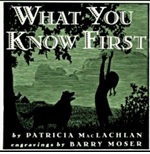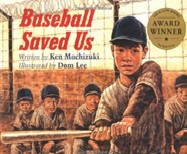They sit on the floor in front of me eagerly waiting for me to turn the page. They’ve made predictions, shared ideas they’re inferring, made connections to the poetry and informational texts we’ve read this week. They ask if the author has written other books. There’ve been so many questions. Questions that led us to other books and research so we could get answers.
I understand their enthusiasm. Because like them, I have a thing about picture books.
A picture book predilection.
It’s endearing in any classroom full of kids to see the love for picture books, but even more so with this group of kids.
They’re big kids.
Some are taller than me, wise beyond their years and scary street savvy. But they love to listen to books being read aloud to them.
My sister-in-law taught high school AP English students. She read picture books to her students. A lot of picture books.
Paul Hankins and Pernille Ripp are two well-known secondary teachers that share their commitment to reading picture books with their students. They’re both a constant inspiration to teachers about the power of picture books for older students. If you don’t follow them on Twitter, you should.
The Cooperative Children’s Book Center (CBBC) in the School of Education at the University of Wisconsin in Madison has a site with a bibliography of picture books for older students. It’s from 2007, but it has some great books and it’s a place to start if you need help with some titles. Goodreads has a list for picture books for older kids and then ALA always publishes their Notable Books each year. Follow Colby Sharp, John Schu, Donalyn Miller, Teri Lesesne, and Travis Jonker on Twitter and Facebook to get great picture book titles. Then use your summer months to read stacks and stacks of great picture books so you’re in the know about titles to read to your big kids.
Think picture books are just for young children? Think again! Some picture books are created with an older audience in mind. Others embody a level of sophistication in the text or art that offers intrigue for older children and/or teens even as they also appeal to a younger audience. Still others offer outrageous humor that can be enjoyed by readers of many ages. (CCBC, 2007)
Last week I blogged about text collections I’d put together for some 5th grade students to read during their 12-day intervention. Based on their questions and our discussions, there were some additional picture books that found their way into our 90-minute sessions during the days we were together.

A colleague suggested I read What You Know First aloud and follow with a few other texts. We read it and then annotated several stanzas typed in a Word doc.

We read this selection from Scholastic Storyworks about a young girl named Dania who fled the war in Syria with her family. It helped for us to view a short video clip of the work Save the Children is doing in Lebanon creating schools for young Syrian refugees. Connections made by the students between this article and What You Know First were mind blowing.

Baseball Saved Us by Ken Mochizuki shares a fictional account (historical fiction) of a Japanese-American family sent to an internment camp during World War ll. This was a great companion to the Storyworks article and Patricia Mac Lachlan’s book.

We closed out the intervention sessions with these compelling wordless picture books by Aaron Becker. The plot diagrams created by the students were detailed and sophisticated. The conversations about the story lines and the connections between all the previous selections were amazingly mature for these readers who’d been labeled as “struggling”.
Nothing about these students’ annotations and conversations were left wanting. These big kids and their love of picture books led them to deep thinking and thoughtful application to their own lives and the world they live in.
Picture books and big kids. A perfect match.










